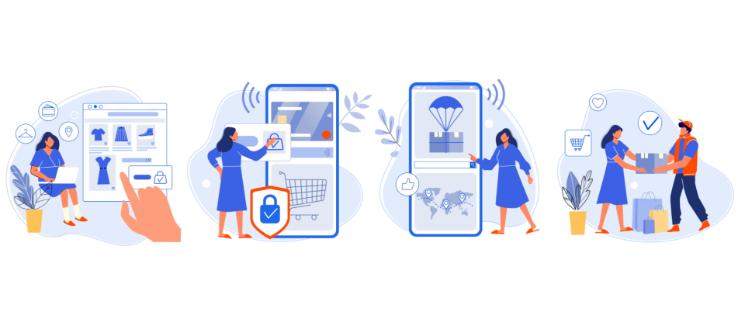- Customers of the eRetail and Fashion sector prefer to return up to 40% of purchases made online – much more than in brick-and-mortar stores.
- Meanwhile reverse logistics costs have been unknowingly absorbed by retailers over the years.
It’s taken a lot of years, and some very expensive lessons, but now the eRetail and Fashion industry knows the drivers and levers of reverse logistics.
Retailers are ensuring many happy returns today by correctly prioritizing speed, visibility, and cost. This capability was essential during the peak of the COVID-19 lockdown, with so many more people shopping online and – once they’d considered their purchases in the safety and privacy of their homes – deciding to return more.
Sometimes customers ordered the same item in several variants, knowing full well they’d keep only one and send back all the rest and research suggests that one fifth of online fashion purchases include duplicate items. With practices like these, as many as 4 in 10 orders in the eRetail and Fashion supply chain get labeled “return to sender.”
The harsh reality is that retailers have a relatively short cycle in which to make money. And they don’t want to lose a big slice of that cake by paying for logistics twice (the cost of the original delivery journey and then also the return journey). For years, traditional retailers didn’t focus on the returned goods supply chain and unknowingly absorbed the cost of their reverse logistics activities into the “business-as-usual” cost base. But now the wild child that was reverse logistics has been tamed. Here’s how the industry has taken back control.
- Speed
Online shoppers are becoming very impatient. Not only do they expect to receive their ordered goods quickly, they also want a brisk returns process to ensure a rapid refund. Back in 2018, Statista looked at the number of days acceptable for consumers when dealing with returns in the U.S. and U.K. For the age group 35 to 44 years, it seems three to five days was acceptable. I suspect that window has since shrunk. There are two ways to speed up – make it as easy as possible for customers to drop off returns with lots of options and rely on local warehouses instead of one central or regional facility to reduce the transit time.
To minimize product processing and customer response times, DHL uses advanced planning and execution tools. In fact, it is right at the point of order that we undertake returns diagnosis, determining how the item, if returned, would be managed in the supply chain – for example, would it be reused, repaired, or sent for recycling? By planning both the outbound and the inbound flows simultaneously, we optimize the overall efficiency and cost of logistics. - Visibility
Customers also want to see the progression of their returned goods through time and space. When retailers provide high levels of visibility, they secure a more consistent and responsive customer experience. At the same time, this cuts operational costs and enhances brand reputation.
Here at DHL we optimally manage the returns flow with global visibility capabilities. It’s typical of the return journey that less time is spent on actually moving the goods and more time is spent on processing them. So one way that we speed up this second stage is to provide visibility of item description, value, and its returns status – for example, is this item authorized for immediate refund? This data-driven insight enables forecasting, accelerates processing, and reduces expenditure. - Cost
In 2017, U.S. returns delivery costs were estimated at $350 billion, a figure that’s been steadily rising. Back then the Statista prediction was an increase to $550 billion by 2020. Unfortunately, the cost of returning an item can sometimes exceed the actual item value. The math just doesn’t work. And, of course, landfill is not an acceptable option as the same customers that buy and return goods are often also conscious about sustainability.
We therefore work with customers to define the end-to-end reverse logistics function, accurately calculating the total cost of customer service, collections, re-working, grading, put-away, transportation and more. Obtaining and analyzing this data helps retailers to take the right decisions, minimizing cost while managing service and risk.
Talking with our customers in the eRetail and Fashion industry, the reverse logistics benefit that’s mentioned most often is the reduction of waste in operations. This is a topic that we can all be passionate about. There are so many ways to reduce waste by using the right packaging materials in reverse logistics, and combining this with schemes to reuse and recycle packaging wherever possible. We can also commit to greening our warehouses and distribution centers and cutting transport emissions – at DHL, we’re aiming for net-zero emissions by 2050.
So now that reverse logistics has come of age, a brighter and ever-more sustainable future lies ahead. That’s certainly something worth celebrating!
Published: November 2020
Image: Shutterstock
Why go looking for the latest logistics stories and insights when you can have them delivered right to you?







